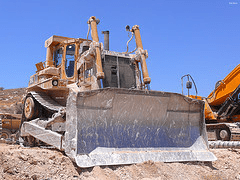The destruction that I am referring to is not sinister or borne out of a desire to blow things up. I am simply referring to the difficult decision that many companies agonize over when considering destroying their documents after those documents have been scanned. Fear not, there are answers available to help make the best decision, one way or another.
We have seen situations where documents come out of storage, get scanned and then go back into storage. The reason for scanning was to improve access to the documents. The reason not to destroy might be fear or possibly a valid Federal, State or industry requirement.
Not destroying the documents after scanning increases the cost of the scanning effort and it increases the cost of storing the documents into the future. Destroying documents does cost some money, but it is much less expensive then storing the documents. Making an informed decision to destroy or not destroy can save money or ensure compliance, both important issues.
So where are these answers so that you can make an intelligent decision. Start with the Federal Rules of Evidence, Rules 1001-1008. States all have their own rules but many are modeled after the Federal rules. In fact, for Illinois the State Rules of Evidence that cover “copies” are also rules 1001-1008.
Other places to look for answers would be governing bodies, associations or membership requirements. For instance, the SEC or FDIC may have specific rules for retaining originals of some agreements. Local school districts may have rules for maintaining employment records in original format for all teachers. If you cannot locate the rules specific for your situation or industry there are many good records management consultants and lawyers that will do the digging for you.
If you do find that you can destroy the documents after scanning, the value of your digital evidence (the scanned versions) will increase with some simple steps. First, make sure that access to the digital documents is fully logged so that you know exactly who has accessed the documents. This will let you prove to the court that the document has not been tampered with. Second, think about using a hosted document management system. Since the documents are not on your server, the ability to access them is even more remote. Lastly, document exactly how the imaging process was performed so that there is a chain of custody from paper to digital, which helps to prove that tampering was not possible.
We are happy to refer you to some records management experts if you have questions. One other piece of advice, don’t run out and buy a giant shredder. Let a professional help you – and get a destruction certificate too.
Please contact us for more information or to get started today
For more information on Millennia Group, please go to www.mgdocs.com or email us at info@mgdocs.com

